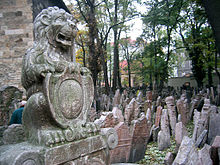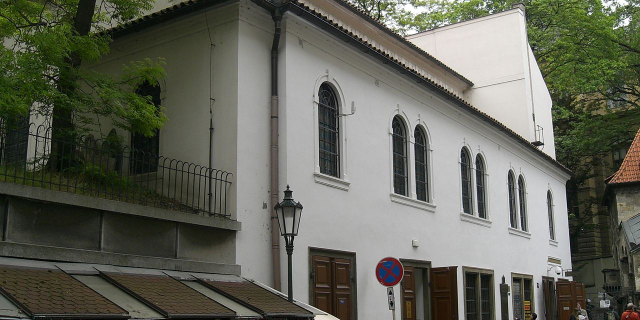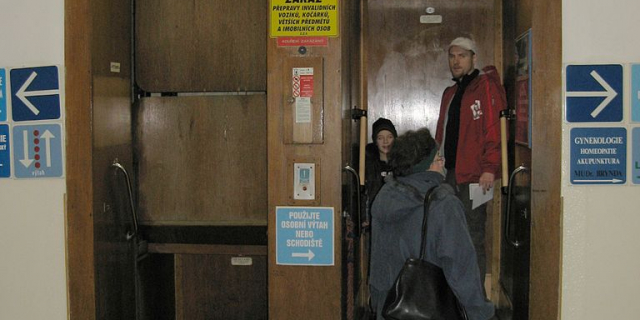Starý židovský hřbitov v Praze-Josefově
( Old Jewish Cemetery, Prague )The Old Jewish Cemetery (Czech: Starý židovský hřbitov) is a Jewish cemetery in Prague, Czech Republic, which is one of the largest of its kind in Europe and one of the most important Jewish historical monuments in Prague. It served its purpose from the first half of the 15th century until 1786. Renowned personalities of the local Jewish community were buried here; among them rabbi Jehuda Liva ben Becalel – Maharal (ca. 1526–1609), businessman Mordecai Meisel (1528–1601), historian David Gans (ca. 1541–1613) and rabbi David Oppenheim (1664–1736). Today the cemetery is administered by the Jewish Museum in Prague.
The cemetery is mentioned in Umberto Eco's The Prague Cemetery, the novel which was named after it.
 Lion – herald on gravestone of Hendl Bassevi.
Lion – herald on gravestone of Hendl Bassevi. Some gravestones about 1900;
Some gravestones about 1900;Stereoscopy as colored postcard No. 782 by Knackstedt & Näther, HamburgPredecessor
The Old Jewish Cemetery is not the first Jewish cemetery in Prague – its predecessor was so-called "Jewish Garden“ located in the area of present New Town of Prague. This cemetery was closed by order of King Vladislaus II in 1478 because of complaints of Prague citizens. Later it disappeared under the streets of New Town.
EvolutionWe know that the history of the Old Cemetery started before the old one being closed, but the exact date when it was founded is unknown. The only clue is the oldest gravestone in the cemetery from 1439 which belongs to rabbi and poet Avigdor Kara.
 The Old Jewish Cemetery Prague, by Alexander von Swiezewski, end of the 19th century. In the collection of the Jewish Museum of Switzerland.
The Old Jewish Cemetery Prague, by Alexander von Swiezewski, end of the 19th century. In the collection of the Jewish Museum of Switzerland. Starting at the middle of the 15th century, the gravestones record is a continual time line of burials. The final gravestone is dated 1787; three years earlier, the enlightened sovereign Emperor Josef II had banned burials inside the city walls for hygienic reasons. Later Prague Jews used a cemetery in Žižkov, founded in the 17th century because of plague epidemic.
Space and burial in layersDuring the more than three centuries in which it was in active use, the cemetery continually struggled with the lack of space. Piety and respect for the deceased ancestors does not allow the Jews to abolish old graves. Only occasionally the Jewish community was allowed to purchase grounds to expand the cemetery and so many times it had to gain space in other ways; if necessary, a new layer of soil was heaped up on the available area. For this reason, there are places where as many as twelve layers now exist.[citation needed] Thanks to this solution the older graves themselves remained intact. However, as new levels were added it was necessary either to lay over the gravestones associated with the older (and lower) graves to protect them, or else to elevate the stones to the new, higher surface. This explains the dense forest of gravestones that one sees today; many of them commemorate an individual who is buried several layers further down. This also explains why the surface of the cemetery is raised several meters higher than the surrounding streets; retaining walls are necessary to hold the soil and the graves in place.































Add new comment